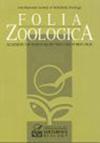Seasonal food habits of the endangered Indochinese leopard Panthera pardus delacouri in a protected area of North West Thailand
Q2 Agricultural and Biological Sciences
引用次数: 6
Abstract
Abstract. The Indochinese leopard Panthera pardus delacouri has experienced a sharp decline in numbers and distribution, especially in Thailand. We have analyzed its diet in Om Koi Wildlife Sanctuary of North West Thailand, where only wild prey species were present. Scats were collected during the dry-hot and the dry-cold seasons. The Indian muntjac appeared to be the staple of the leopard's diet, particularly in the dry-cold season, and consumed equally with the Indian wild boar in the dry-hot one. The occurrence of the Indochinese hog deer in the diet of the leopard in Om Koi represents the first detection record of this endangered species in North West Thailand, after being long extirpated. During the dry-hot season, poachers slashed and burnt portions of forest to flush game and to provide space for poppy fields. Muntjacs are sensitive to both forest fires and poaching, whereas Indian wild boar are resilient to disturbance, which may explain their alternation in diet.摘要我们在泰国西北部的Om Koi野生动物保护区分析了它的饮食,那里只有野生猎物。在干热季节和干冷季节收集粪便。印度麂似乎是豹子的主要食物,特别是在干冷季节,在干热季节和印度野猪一样。在干热季节,偷猎者砍断和烧毁部分森林,以冲洗猎物并为罂粟田提供空间。蒙麂对森林火灾和偷猎都很敏感,而印度野猪对干扰很有弹性,这可能解释了它们在饮食上的变化。
本文章由计算机程序翻译,如有差异,请以英文原文为准。
求助全文
约1分钟内获得全文
求助全文
来源期刊

Folia Zoologica
生物-动物学
CiteScore
1.70
自引率
0.00%
发文量
0
审稿时长
3 months
期刊介绍:
Information not localized
 求助内容:
求助内容: 应助结果提醒方式:
应助结果提醒方式:


